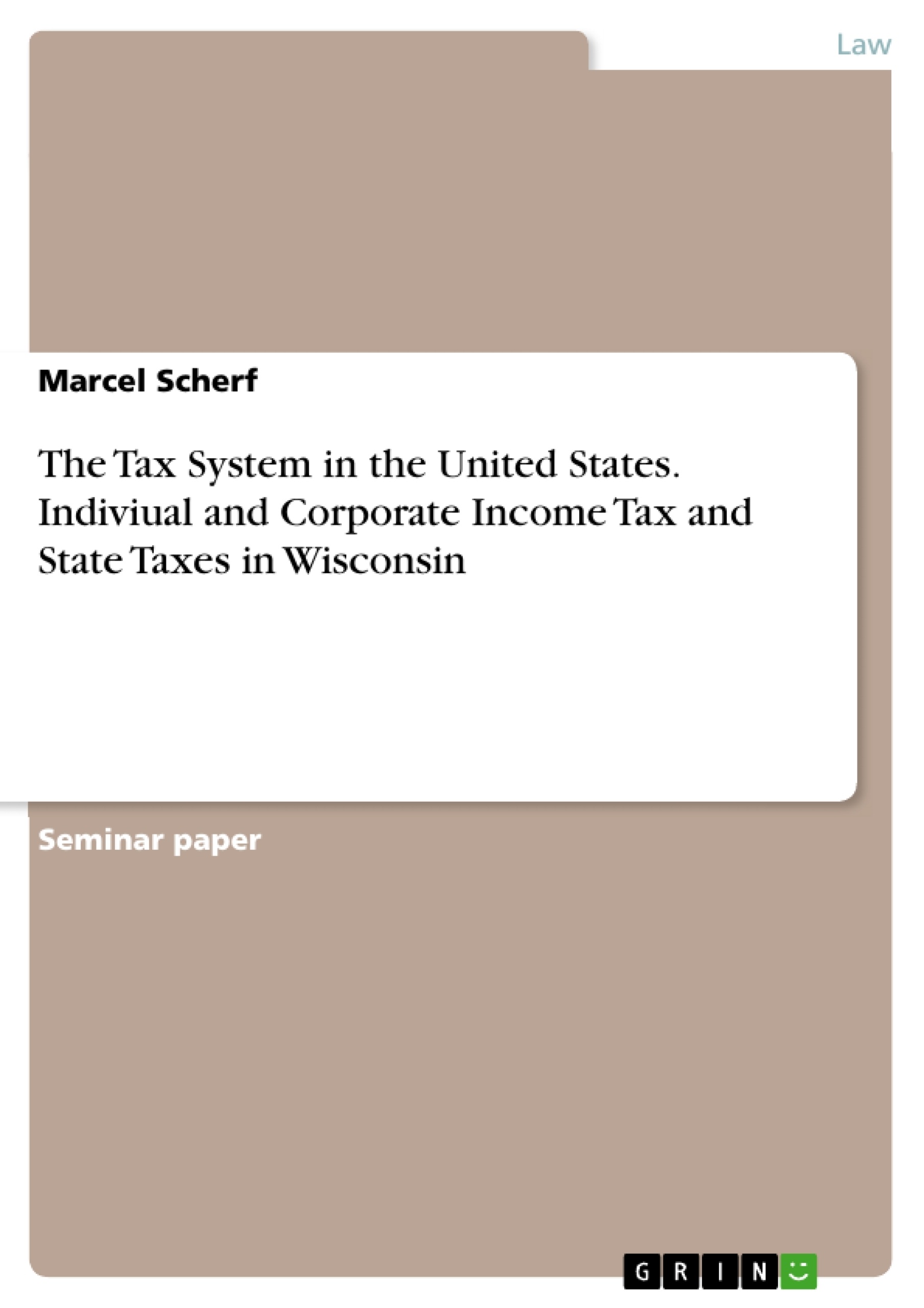The English colonists in the Massachusetts Bay Colony enacted the first income tax in 1634, but the federal government did not adapt this form of taxation until 1861. Eleven states and the Federal Union raised income tax to finance the civil war. After the civil war, there was no need for income tax and the federal government to repeal the tax. All operations could be financed by customs duties.
In 1894, a new federal income tax on individuals was enacted. The federal corporate income tax was enacted by the Congress in 1909. The U.S. Supreme Court had approved all these laws. The German Einkommensteuergesetz was enacted in 1934, the Körperschaftssteuergesetz was enacted in 1920, and the Gewerbesteuergesetz in 1936.
With the Revenue Act from 1913, the first form 1040 was due on March 1, 1914. The structure was very similar. They already had deductions and personal exemptions. The rates ranged from 2 percent to 6 percent. The 6 percent rate applied for income in excess of $ 500,000. Nowadays the highest rate is 35 percent and applies on taxable income above $357,700.
Inhaltsverzeichnis (Table of Contents)
- Introduction and Basis tax model
- History of U.S. Taxation
- Early Periods
- Revenue Acts
- Federal Budget receipts -2008
- Criteria for Evaluating a Tax Structure
- The Tax Structure
- Major Types of Taxes
- Property Taxes
- General Sales Taxes
- The Federal Tax Law
- The Tax Law and Sources
- Statutory Sources of the Tax Law
- Administrative Sources of the Tax Law
- Judicial Sources in the Tax Law
- Trail Courts
- Appellate Courts
- Individual Income Tax
- Tax Determination with the Tax Formula
- Tax Formula
- Components of the Tax Formula
- Personal Exemptions
- Dependency Exemptions
- Gross Income
- Definition
- Year of Inclusion
- Income Sources
- Exclusions from the Income
- Items specifically excluded from Gross Income
- Gifts and Inheritances
- Life Insurance Proceeds
- Foreign Earned Income
- Interests on Certain State and Local Government Obligations
- Deductions and Losses
- Classification of Deductible Expenses
- Deductions for Adjusted Gross Income
- Business and Hobby Losses
- Depreciation, Cost Recovery, Amortization, and Depletion
- Concepts Relating to Depreciation - Nature of Property
- Modified Accelerated Cost Recovery System (MACRS)
- Amortization
- Alternative Minimum Tax
- Individual Alternative Minimum Taxable Income (AMTI)
- AMT Formula for Alternative Minimum Taxable Income (AMTI)
- AMT Adjustment
- Tax Preferences
- Other Components
- Tax Credits
- Refundable and Nonrefundable Credits
- General Business Credit
- Other Tax Credits
- Property Transactions
- Determination of Gain or Loss
- Corporations and Partnerships
- Income Tax Considerations
- Individuals and Corporations Compared
- Deductions Available to Corporations
- Determination of Corporate Tax Liability
- Operating the Corporation
- Dividend Distributions
- Liquidating the Corporation
- General Rule of § 331
- Exception to the General Rule
- Partnerships
- Nature of Partnership Taxation
- Partnership Formation
- Partnership Operation
- Non Federal Taxes
- State Taxes in Wisconsin
- Income Tax
- Summary
Zielsetzung und Themenschwerpunkte (Objectives and Key Themes)
This work aims to provide a comprehensive overview of the United States tax system, focusing on individual and corporate income tax. It examines the historical development of the system, explores its structure and key components, and delves into the legal framework that governs it.- History and Development of the U.S. Tax System
- Key Components of the U.S. Tax System, including Income Tax and Tax Formula
- Legal Sources and Framework for Understanding Tax Laws
- Tax Considerations for Individuals and Corporations
- State Tax Laws and Their Application in the United States
Zusammenfassung der Kapitel (Chapter Summaries)
The first chapter provides a historical overview of the U.S. tax system, tracing its development from the early colonial period to the present day. It highlights key milestones, including the enactment of the first federal income tax in 1861 and the subsequent evolution of the system through various revenue acts. The chapter also discusses criteria for evaluating tax structures, emphasizing the importance of equity, convenience, certainty, and economy.The second chapter delves into the legal sources of the U.S. tax law, emphasizing the interplay of statutory, administrative, and judicial sources in shaping tax regulations. It examines the roles of various courts, including trial courts and appellate courts, in interpreting and applying tax law.
The third chapter focuses on individual income tax, examining the tax formula used to calculate individual tax liability. It explores various components of the formula, including gross income, exclusions, deductions, and tax credits. The chapter further examines concepts related to depreciation, cost recovery, amortization, and depletion, as well as the alternative minimum tax.
The fourth chapter shifts attention to corporations and partnerships, analyzing income tax considerations specific to these entities. It compares the tax treatment of individuals and corporations, outlining deductions available to corporations and the process of determining corporate tax liability. The chapter also examines the implications of operating and liquidating corporations, including dividend distributions and partnership formation and operation.
The fifth chapter briefly explores non-federal taxes, specifically focusing on state taxes in Wisconsin. It provides a concise overview of state income tax regulations.
Schlüsselwörter (Keywords)
This work focuses on the U.S. tax system, examining its historical development, legal framework, and key components, particularly individual and corporate income tax. Key terms and concepts include tax structure, tax formula, gross income, deductions, credits, depreciation, amortization, alternative minimum tax, corporate tax liability, dividend distributions, partnership taxation, and state income tax.- Quote paper
- Marcel Scherf (Author), 2009, The Tax System in the United States. Indiviual and Corporate Income Tax and State Taxes in Wisconsin, Munich, GRIN Verlag, https://www.grin.com/document/126052



